15 Expert Tips: How to Improve Athleticism
May 5, 2021
You want to know how to improve athleticism so you have the ability to be thrown into any situation, whether it’s lifting, playing a sport, running up the stairs, or should the moment arise, self-defense and come out on top.
Even more, you want to lose fat, build muscle, and look great naked.
Unfortunately, most programs fail miserably at helping you build a body that performs as well as it looks. Living under a barbell and only chasing maximum strength isn’t the answer. This will leave you unbalanced, beat-up, and sore.
Neither is trodding along the treadmill for hours each week.
So, what’s your solution?
Train like an athlete.
You’ll improve athleticism to handle whatever life throws at you and build a great-looking body to boot. And if you want a simple way to get lean and athletic without living in the gym, grab your free copy of our One Hour Body Guide
1) Value Relative Strength As much as Absolute Strength
There are many factors to consider, but heavy strength training is a tool for improvement, not the end-all-be-all in performance.
Does spending all of your time training towards building more strength outweigh the benefits of higher relative strength (being strong for your size), and corresponding improvements in agility, speed, power, and coordination?
Sorry to burst your bubble, but no. Not if you’re joints are getting beat up and your training is one-dimensional. 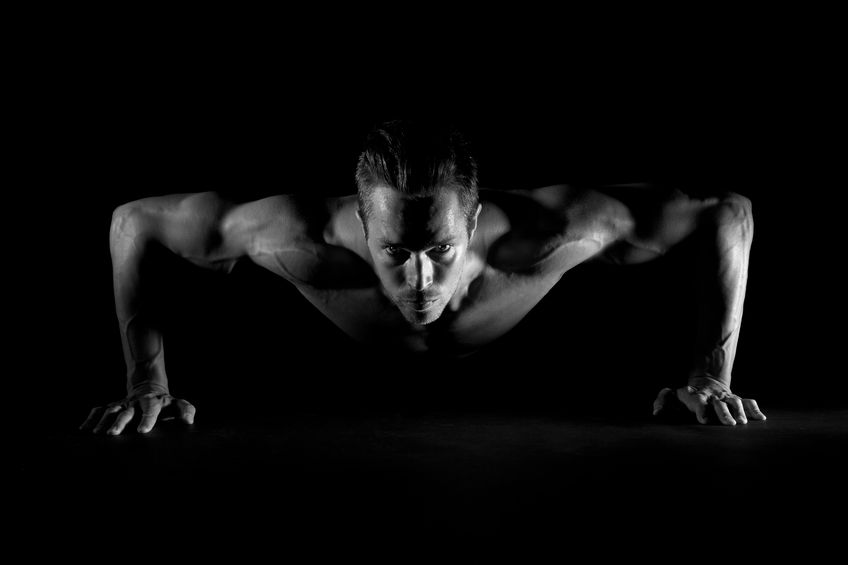
This is not to belittle training heavy. It’s needed as a foundational piece for every person, but chasing personal strength records as your sole goal in the gym is a great way to beat the snot out of your joints and end up as a one-trick pony.
Yes, build a base of maximum strength, everything else will improve. Then, strive for a more balanced approach and get strong for your size. Move beyond the barbell, incorporate bodyweight training, sprint, jump, and move like an athlete.
Related: Find out Seven Ways to Improve Relative Strength
2) Develop Unilateral Strength and Power To Improve Athleticism
David Dellanave of Dellanave.com
If you want a more athletic, and dare I say functional, type of strength prepare to get comfortable with unilateral work. Unilateral exercises, those done with one limb rather than two, are ideal for preventing injury-causing imbalances and developing athletic unilateral power.
Let’s look at two great movements to make this happen:
The first is the skater squat or airborne lunge. This is a challenging movement that is fantastic for building single-leg strength. Don’t be put off by this bodyweight exercise – most people have to progress from a Bulgarian split squat to develop single-leg strength and stability to prepare for the unsupported, skater squat.
The skater squat is like a pistol squat, but instead of the non-working leg is outstretched in front of you, the hip is flexed and you tap the knee of the non-working leg on the ground near your planted foot. Here’s one of Ben Bruno’s guys doing it:
In most cases, you’ll want a little weight to act as a counterbalance to aid in balance. To progress the skater squat slightly reduce the range of motion by tapping the knee to a yoga block rather than on the ground.
This increases the difficulty of the exercise by requiring additional eccentric control, an essential skill for preventing injuries. Gradually increase the range of motion until you’re going all the way to the ground.
The second unilateral power exercise is the split stance one-armed push press, one of the most underrated exercises for athletic power development. Working with one arm negates the bilateral deficit and allows you to move a ton of weight for massive gains in strength and power.
The push press requires other transfer of force from the power body until a full-body, coordinated movement.
When done from a split stance, the push press forces stability through the hip and trunk to get you strong and stable from head to toe.
Integrate these two staples into your strength and conditioning program and you’re going to be a force to be reckoned with on the field.
3) Jump Rope to Improve Coordination
Hitting the weights hard and eating well is important, but improving athleticism requires coordination, not just brute strength. After all, you don’t want to be the guy tripping over his own feet dancing at his wedding, right?
Take heed of athletic greats like Muhammad Ali, Walter Payton, and Floyd Mayweather and make the jump rope a staple in your training. You’ll build great conditioning, shed fat and improve your athleticism while bringing up those anemic calves of yours.
Start slow and build your skill by using the jump rope for 100 skips in your warm-up. Soon, you’ll be skippin’ rope-like Rocky Balboa.
4) Improve Functional Mobility and Reinforce with Strength and Stability
Dr. John Rusin, the Strength Doc.
“If you have goals of becoming an elite athlete, functional mobility is a pivotal aspect of high performance.”
If your first thought in achieving Gumby-like mobility is with the addition of more stretching and foam rolling to your training program, think again.
Whether stretching and rolling works is still under academic debate but one thing holds true; neither of these modalities are going to streamline translatable mobility like the pristine execution of accentuated loaded eccentrics to your training schedule.
In other words, get off the foam roller, and focus on using big barbell lifts with a slow tempo.
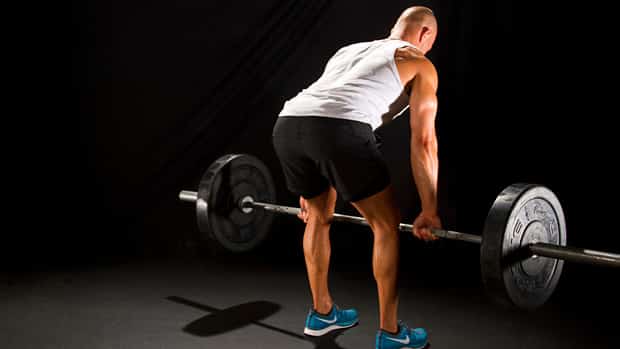
You have most likely already had a taste of the basics of accentuated loaded eccentrics in foundational barbell movements like the Romanian deadlift. With the operative word being “accentuated,” this type of training method is largely dependent on the execution of prescribed tempos and extended ranges of motion.
Increasing the time under tension during the eccentric phases of big compound movements while moving into the last 10% of the available range of motion will strategically micro-tear facial layers and muscle tissue, while also retraining neural receptors to adapt to extended ranges of motion under load.
In other words, you’ll build strength, stability, and flexibility all in one.
Give it a shot, and remember this method can be used for nearly any movement pattern or muscle group. The key is in the execution– own your movement, challenge your body and reap the benefits of Olympian level mobility.
5) Incorporate Basic Movement Patterns Like Skipping
Tony Gentilcore of Tonygentilcore.com
Want a humbling experience?
Try skipping like you used to do as a kid.
It’s funny: I’ll say to someone, “we’re going to warm-up with some skipping drills,” and many will roll their eyes and chuckle as if to say “dude, really? Skipping?” Then I watch them skip and I’m the one who ends up laughing.
Unfortunately, most folks have spent YEARS in front of a computer. Now, their idea of athleticism is taking the stairs over the elevator.
Unfortunately, there’s a good chance you don’t move a lot or well anymore and as a result, have poor coordination and athleticism.
By integrating skipping into your warm-ups you’ll begin rebuilding sprinting mechanics and coordination without the risk of injury. Here’s a quick progression of an a-march into an a-skip.
Look easy?
Give it a shot.
It’s a nice way to “extend” your warm-up and introduce SOME form of athletic movement…especially if your workouts have been walking to the water cooler between sets of curls and bench presses.
6) Improve Athletic Performance: Do Heavy And Explosive Training First
When setting up any training program or workout, you need to place more neurologically demanding exercises early in each session.
Why?
How well you perform your exercises is exponentially more important than “how many reps” or how much weight you move. Thus, optimizing technique is essential to improve your performance and reduce your chance of injury.
Let me explain.
Exercises that are neurologically demanding like explosive lifts, sprints, jumps, and heavy compound exercises place the most demand on your nervous system. If you don’t do them when you’re fresh, your technique will fail and you’ll be more likely to get injured.
This is why despite the many good qualities of a certain type of exercise ending in “fit” so many people end up injured. Blasting exercises like power cleans and snatches after red-lining your heart rate doesn’t allow your nervous system to recover and thus, your technique goes to shit.
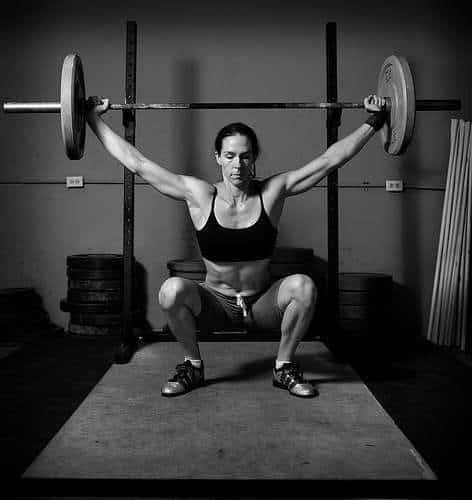
To get strong, jacked, and athletic, follow this basic order of exercises.
1.Explosive, high-speed exercises. Jumps, sprints, Olympic lifts.
2. Heavy strength training moves. Exercises like squats or deadlifts where you’re focused on 1-5 reps fit here.
3. Moderate rep (5-12 rep) hypertrophy exercises.
4. Isolation and high rep muscle-building exercises.
5. Cardio/conditioning/finishers.
If you’re looking for a step-by-step plan to optimize performance and build a bad-ass physique, join thousands of lifters who’ve joined the Minimalist Muscle Blitz.
7) Build your Base of Strength to Improve Athleticism
For most gym-goers, a basic strength-training program will go a long way in improving athleticism. Keep the specialized exercise programs for more advanced athletes and hammer full-range-of-motion strength training.
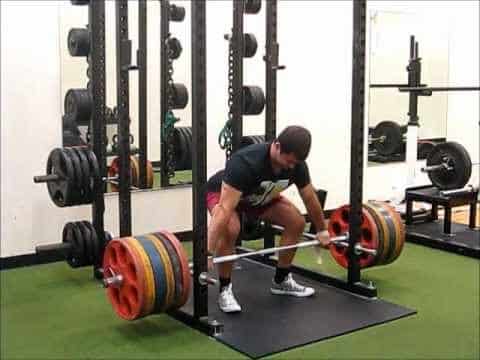 Training with good form and in a progressive manner (adding weight to the bar consistently) will give you a bigger bang for your training buck than a lot of the fancier “sport-specific” drills, especially until you have a foundation of strength.
Training with good form and in a progressive manner (adding weight to the bar consistently) will give you a bigger bang for your training buck than a lot of the fancier “sport-specific” drills, especially until you have a foundation of strength.
Emphasize major lifts like deadlifts, squats, bench presses, and rows with sound technique. Get strong and develop your base of strength. This way, you’ll build the foundation to make gains and successfully use those fancy exercises down the road.
8) Move Explosively Everyday
Nick Tumminello of Nicktumminello.com
If you’re like most lifters, you stopped rapid, explosive movement years, if not decades ago.
Rather than solely lifting heavy, incorporate explosive movement and do something fast every day. Being jacked and strong is nice, but expressing strength fast and generating tons of power separates the contenders from the pretenders.
That means you should sprint, throw, punch, or jump regularly.
Rather than spending countless hours refining techniques on Olympic lifts, it’s best to use exercises with an accelerated learning curve to train the same qualities: explosive power, nervous system activation, and activation of high threshold muscle fibers.
This bridges the gap between strength and speed, prompting your nervous system to function at full speed, improve your coordination, and improve the firing rates of your muscles on big lifts.
Add in jumps for the lower body workouts.
On upper body workouts, add in explosive throws or push-up variations.
A good starting place is three sets of five reps directly after your warm-up. In a short time, you’ll improve neural activation, better recruit muscle fibers, and prepare your body to be stronger and more athletic in sport and in life.
9) Incorporate Multi-planar Training
Travis Pollen, the Fitness Pollenator
As an amputee, I might be a little biased, but single-leg training with the aforementioned exercises will improve athleticism and minimize injury-causing imbalances, especially if you’ve been spending all your time on conventional barbell exercises.
Train unilaterally: multi-planar split squats and lunges, single-leg stiff-legged deadlifts, single-leg hurdle jumps, even single-leg hang cleans.
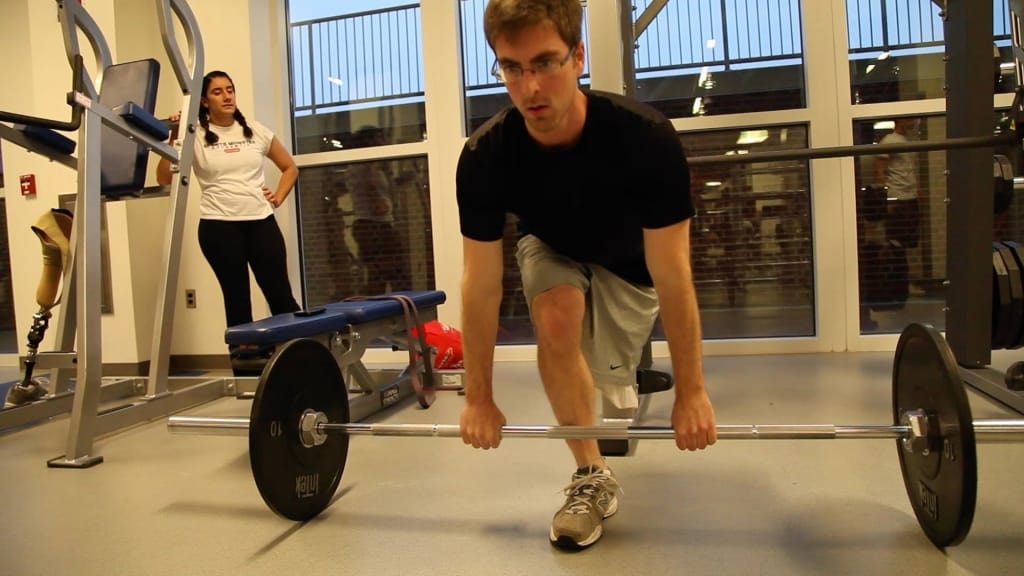
Most lifts take place solely in the sagittal plane, yet sports are chaotic and take place with frontal, sagittal, and transverse plane movements. In other words, most training doesn’t match what you do on the playing field or in life.
Life takes place by moving 360 degrees, not in a squat rack. You need to get out and move in multiple directions with different movements to maximize the real-world carryover of your training.
While you must master basic exercise first, incorporating movements that require greater stabilization throughout the entire body will undoubtedly improve a variety of qualities that contribute to athleticism. There are the obvious ones like strength and power and then some less obvious ones, too, like mobility, stability, balance, and proprioception.
10) How To Be More Athletic: Build Up Multi-level Strength
Chad Landers of Push Private Fitness
To improve athleticism get stronger, both in an absolute and relative sense. 90% of people will never have the issue of being too strong to excel in sports. As a result, improving strength and training with a variety of rep ranges sets your infrastructure for speed, stability, power, and of course, building an aesthetically pleasing physique.
It’s imperative to note that you don’t need to train at 90, 95% of your one-rep-max, save that for the powerlifters.
Instead, hammer the 3-5 rep range with 80% 1-RM in the “big lifts” like squats, deadlifts, presses, cleans, rows and pull-ups. This is a weight you can handle for 6-10 reps. This way, you’ll still build strength without getting beat up, sore, and exhausted.
11) Improve Rotational Strength and Power
Kennet Waale is the coach and founder of Move Strong and www.kennetwaale.com.
Power is vector-specific, meaning if you want to build rotational power for sports like tennis, baseball, beer-league softball, or golf, then you need to train rotation directly. The two exercises below are thoroughly explained in the videos regarding execution to help you build rotational strength and power.
Don’t let your ego come in the way – start light; master the movements and progress the weights and tempo as you go. Soon, you’ll be swinging and punching harder with specific rotational power.
Recommended weights:
- Males +70kg start with: 20kg Kettlebell
- Males -70kg start with: 16kg Kettlebell
- Females +60kg start with: 16kg Kettlebell
- Females -60kg start with: 12kg Kettlebell
- Stick with the above weights for the first three weeks before you decide to increase it when technique is optimal.
The Dragon Press Half Rotation
The Lateral Clean
12) Improve Thoracic Mobility for better Overhead Movement
Dean Somerset of Deansomerset.com
Modern sedentary society has left many of us keeled out our smartphones and computers.
The result?
Worse posture than quasi-modo and chronic shoulder pain that robs you of gains in the gym and athleticism in everyday life.
The solution?
Improving your thoracic mobility specifically through improving your breathing patterns and glute engagement.
Stay with me, as I know it sounds crazy, but the implications are pretty powerful.
For breathing work, inhalation involves the expansion of the rib cage and extension of the thoracic spine, helping you pull in larger volumes of air during inhalation. As a result, this increases movement in thoracic mobility and stability for overhead movements like shoulder presses.
For the glutes, their glute contraction has a massive impact within a very short period of time to help increase thoracic drive. In a situation where the glutes aren’t being used, the pelvis can be held with a bit more anterior tilt, which causes a compensatory movement of the lumbar spine into more lordosis, extension, or most commonly, arching.
To balance this out, the thoracic spine winds up getting more kyphotic or flexed so as to keep your head vertical over your feet and keep you from falling over.
To fix this, squeeze your butt during overhead exercises. This pulls your pelvis into posterior tilt, which reduces the drive on the low back into extension and thus reduces the drive into the thoracic spine into flexion. It’s a simple tip to improve performance, improve shoulder mobility, and decrease back pain.
The combined aspect of breathing in more air, opening the lungs, and flexing the glutes, increases thoracic extension range of motion rapidly, which can help put you in a better position to overhead press while stabilizing the pelvis for less discomfort and pain in overhead movements.
13) Don’t Sacrifice Nutrition
Kedric Kwan of Kedrickwan.com
With all the training sessions and high demands on game day, athletes have an extremely high-energy output. And if you train like one?
Well, you’re burning a lot of energy as well. But don’t use an increased energy output as a “get out of jail free card” to eat whatever you want.
If you’re a recreational athlete and scarf skittles like Marshawn Lynch, you’ll turn into a slob rather than a high-performance machine.

Even though most of us aren’t looking to be a stage-ready bodybuilder anytime soon, improving body composition will also improve your athletic performance.
Seriously, body fat doesn’t produce force the way muscle does and will decrease relative strength by increasing body weight.
The better your body composition is and the higher the ratio of muscle you have to fat, the more force you’re cable of producing. This force, under the right training conditions, will enhance your athletic potential.
By periodizing your nutrition, being aware of your food intake, and using specific supplements will help improve your body composition.
Instead of eating everything in sight thinking you’ll burn it all off during training or competition, focus on your body composition with proper nutrition.
Besides, who doesn’t want to be a badass on the pitch while looking jacked on the beach?
14) Incorporate the Medicine Ball Back Toss for Explosive Power
Joey Percia
One of the best ways you can improve your athleticism, explosively jumping ability, is the backward medicine ball toss for height. I like the throw for height as opposed to distance because it decreases the likelihood of over-extending your low back in an attempt to get more power, which is a common fault for beginners and those new to the movement.
Most people who haven’t jumped in years let their arms flop around like wet noodles or tuck them tight to the side like pencil diving in a pool.
Don’t be that dude.
Not only is this disadvantageous for jumping but it’s an awkward thing to see.
This movement gives the client a basic understanding of using an effective arm swing, gets the CNS jacked up for stronger lifts and more explosive power. Plus, it’s fun to throw stuff.
15) Start Sprinting to Improve Athleticism
Option One: Sprinting before lifting is ideal for improving performance because it fires up your nervous system to improve heavy and explosive training.
This comes with a risk versus reward trade-off as sprinting done before training must be enough to spark the nervous system, yet low enough in volume and intensity to not fatigue the body and hinder lifting ability. When fatigue is managed your strength performance, conditioning and athleticism will skyrocket.
After your dynamic warm-up (try this one), do some sub-maximal speed drills like skips and low-intensity sprints for 5-10 minutes.
Perform sprints two days per week. Start with 5 sprints of 10-20 yards with 30-60 seconds of recovery and add one sprint per week, maxing out at 10 sprints.
How To Improve Athleticism
Your body is an integrated system and should be trained as such. When in doubt, training to improve your athleticism gives you the ability to dominate life outside the gym while building your best-looking body.
Your homework: Take a few minutes to review your training and ask, “Where can I improve my training?” With these expert tips, the ball is now in your court.
Take even one of these 15 tips, implement it, and start building your strongest, leanest, and most athletic body today.


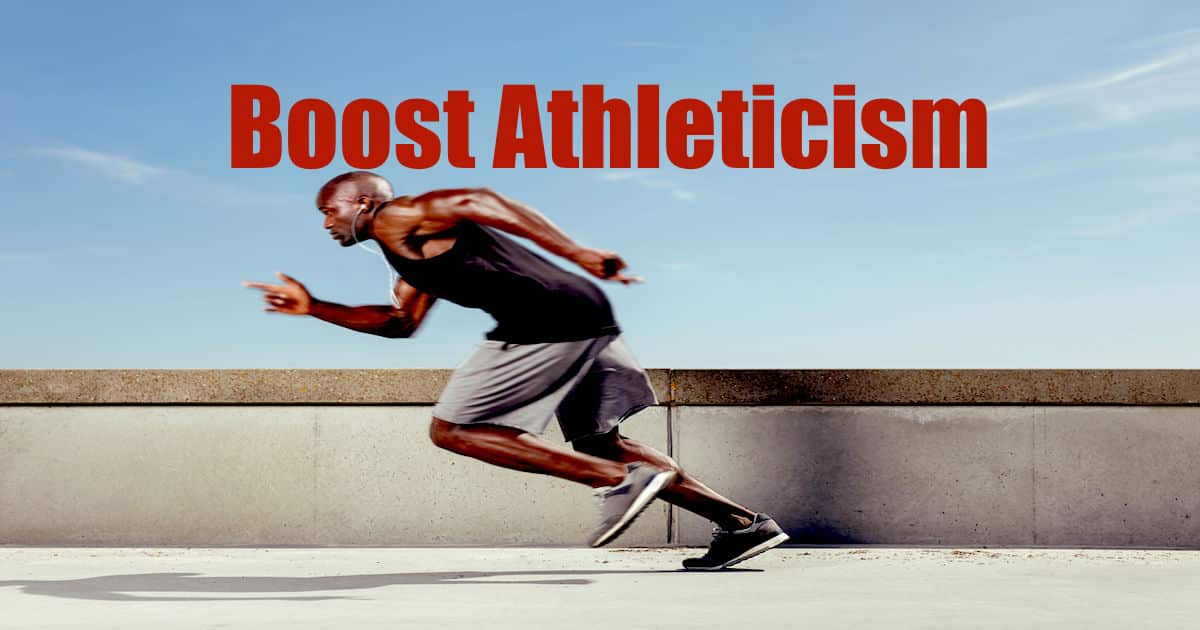

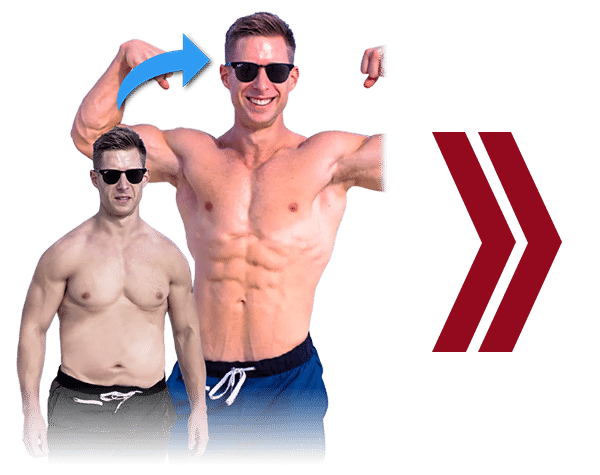





[…] 15 Expert Tips to Unleash your Athleticism — Eric Bach and others […]
[…] 15 Expert Tips to Unleash Your Athleticism via Eric Bach […]
[…] 15 Expert Tips to Unleash your Athleticism via Eric […]
[…] 15 Expert Tips to Unleash your Athleticism — Eric Bach and others […]
[…] 15 Expert Tips to Unleash your Athleticism – Eric Bach […]
[…] https://bachperformance.com/15-tips-to-unleash-your-athleticism/ […]
[…] 15 Expert Tips to Unleash your Athleticism – Eric Bach Some good thoughts here. It’s not ALL picking up heavy things and putting them down. […]
[…] Unleash your Athleticism – Bach Performance […]
[…] If you’ve been counting tempo and using slow lifting speeds, then lifting weights explosively can help you build new muscle and athleticism. […]
[…] Daily Reading 1. Connect Your Lifting And Rowing For Better Performance 2. Being in Relationships with Weightlifters vs. Non-Weightlifters 3. Running is the Worst Way to Get Fit 4. 15 Expert Tips: How to Improve Athleticism […]
[…] How to improve athletiscism […]